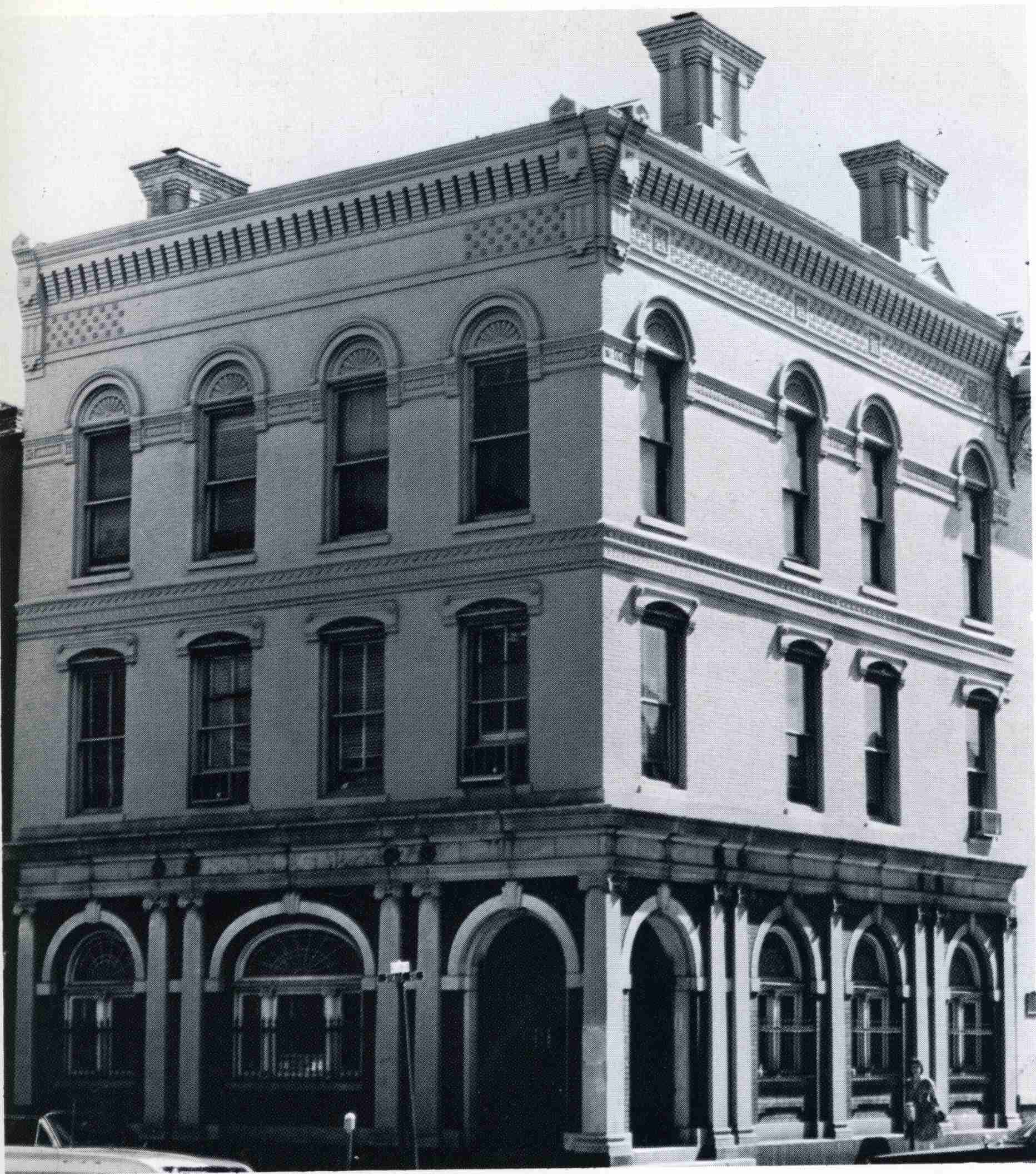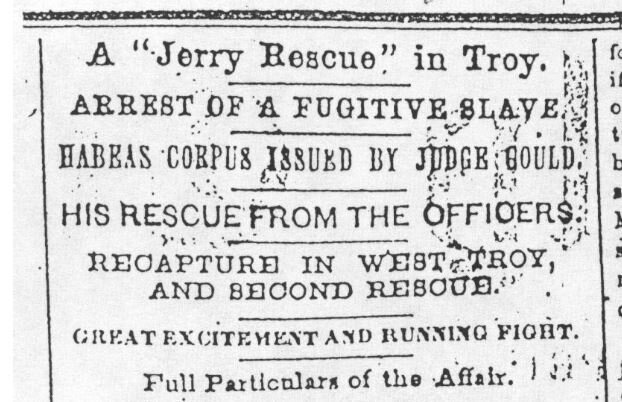The Rescue of Charles Nalle
Freedom-seeker on the Underground Railroad
Profiles Out of the Past of Troy, New York since 1789 by Samuel Reznick, 1970, HCM collection.
Charles Nalle was a twenty-eight year old freedom seeker, who escaped from his enslaver, Mr. Hasbrough, in Virginia using the Underground Railroad and ended up in Rensselaer County, NY. At first Charles worked as a teamster, then with Mr. Schram in Sandlake, and finally as a coachman for coach maker and former Mayor of Troy, Mr. Uri Gilbert.
When he worked in Sandlake, Charles met and worked for a lawyer by the name of Horace Averill. Because he could not read and write, Charles asked Mr. Averill to write his letters for him. Through this letter writing, Mr. Averill learned that Charles was a fugitive slave. Knowing that according to the Fugitive Slave Act he could be fined and put in jail if he did not turn Charles in, Mr. Averill wrote a letter to Mr. Hasbrough telling him Charles’ location. When he learned of Charles’s whereabouts, Mr. Hasbrough sent someone from Virginia to work with the United States Marshals to arrest Charles as a fugitive slave and bring him back to Virginia.
On the morning of April 27th, 1860, Charles went to get some bread for Mr. Gilbert. While he was out, a United States Marshal arrested him as a fugitive slave. Charles was taken to the Commissioner’s office located on the corner of First and State Streets in Troy, New York. In that building, Charles waited while his fate was tried in court. Quickly, it was decided that according to the Fugitive Slave Act, Charles was fugitive slave and should be sent back to Virginia.
Old Mutual National Bank - First and State Streets
Built as the Farmer’s bank in the 1820s, renovated in 1882 by the Mutual National Bank
Meanwhile, one of Mr. Gilbert’s sons thought it was strange that Charles hadn’t returned. He asked Charles’ landlord and friend, Mr. Henry if he knew where Charles was. Mr. Henry, a Black man who lived in Troy and owned a grocery store, often knew community news, Mr. Henry did not know where Charles was and began to fear that something was wrong. They soon learned of Charles’ arrest and learned that a crowd was beginning to gather outside the Commissioner’s office. Members of the Vigilance Committee rallied supporters to join the mob outside chanting for Charles’ freedom. People from around Troy came to save Charles - rich and poor people, Black and white, businessmen and workers. All came, united in their opposition to slavery.
Harriet Tubman, abolitionist and Underground Railroad conductor, was in Troy that day. When she heard that a fugitive slave was captured, she pushed through the mob outside the building and forced her way inside. She climbed the stairs to where Charles was being held. When the authorities tried to remove Charles from the building to begin to take him away, Harriet Tubman leaned out of a window and alerted the mob below that Charles would be coming down the stairs and that the mob should try to get him away from the authorities. Harriet then held on to Charles as he was pushed and pulled down the stairs. She held on to him even as parts of his clothes were torn off. Local abolitionists Peter Baltimore, Martin Townsend and others also lead the charge to rescue Nalle alongside Harriet Tubman.
An eyewitness who watched the excitement reported: “It was about four o’clock in the afternoon… when I suddenly saw a great crowd running down along the dock on the opposite side … in pursuit, apparently, of a [B]lack man, without any hat or coat, running as if for his life. There must have been four or five hundred in the crowd, if not more. He reached the shore, jumped into the skiff, and the ferryman put off immediately into the river. Those leading the pursuit, who appeared to be officials, endeavored to stop him, and even pushed a few steps into the water after the boat. But they were too late.”
Charles Nalle was taken by small boat to West Troy, where he was again arrested. Another crowd had gathered and got him away from the authorities. They put him in a wagon and took him to Schenectady, where friends hid him. A month later, fifty-one citizens of Troy purchased his freedom from his former owner.
Charles stayed in Troy throughout the Civil War and later, he and his family moved to Washington, D.C.
Troy Daily Times, April 30, 1860
Image taken from the article “Out of Egypt on the Hand of a Little Lady” by Jean M. Hoefer, New York Alive, May/June 1986, pg. 32-35.




